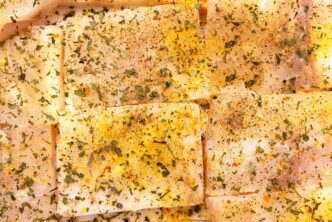For anyone seeking a simple, sustainable, and deeply rewarding way to enhance their health, the answer may be found right on their own windowsill. Growing culinary herbs at home is an accessible practice for individuals of any skill level, whether they have a sprawling garden, a small balcony, or just a sunny spot in their kitchen. This simple act transforms cooking by providing instant access to fresh, nutrient-dense flavors, which can significantly reduce reliance on salt, sugar, and processed fats, ultimately fostering a healthier and more vibrant diet. More than just a culinary upgrade, cultivating herbs offers a direct connection to our food, reduces waste, saves money, and provides a daily dose of mindfulness, making it a powerful and holistic wellness tool.
The “Why” Behind the Green: Unpacking the Health Benefits
At first glance, a sprig of parsley or a few basil leaves might seem like a mere garnish. However, these humble plants are concentrated sources of vitamins, minerals, and potent plant compounds known as phytonutrients, which have profound effects on our well-being.
A Nutritional Powerhouse in a Tiny Package
Fresh herbs are significantly more nutritionally dense than their dried, processed counterparts. The drying process can diminish the concentration of delicate vitamins, like vitamin C, and volatile oils that carry many of the health benefits. A handful of fresh parsley, for instance, delivers a substantial amount of Vitamin K, crucial for blood clotting and bone health, as well as Vitamin C and Vitamin A, powerful antioxidants that support immune function.
Many herbs are celebrated for their anti-inflammatory properties. Compounds like rosmarinic acid, found in rosemary and basil, and eugenol in basil have been studied for their ability to help calm inflammatory pathways in the body. Chronic inflammation is a known driver of many modern diseases, and incorporating these natural anti-inflammatories into your daily diet is a proactive step towards long-term health.
Revolutionize Your Flavor, Rebalance Your Plate
One of the most immediate benefits of having fresh herbs on hand is the ability to create incredibly flavorful food with less reliance on less healthy additives. The bright, zesty notes of cilantro, the peppery kick of basil, or the earthy depth of thyme can elevate a simple dish, making it more satisfying and delicious.
This flavor boost provides a direct pathway to reducing sodium intake. Instead of reaching for the salt shaker to season roasted vegetables, chicken, or fish, a generous sprinkle of freshly chopped rosemary and thyme can provide a more complex and aromatic flavor profile. Similarly, the natural sweetness of mint or basil can cut the need for added sugar in dressings, sauces, and beverages, helping to better manage blood sugar levels and overall calorie intake.
Sustainability and Savings
The plastic clamshells of fresh herbs at the grocery store are not only expensive but also contribute to food and packaging waste. Often, a recipe calls for just a tablespoon of an herb, leaving the rest of the bunch to wilt in the refrigerator. A living herb plant, however, is the gift that keeps on giving.
With a small, one-time investment in a starter plant or a packet of seeds, you gain a continuous supply of fresh flavor. You can snip exactly what you need, when you need it, eliminating waste entirely. This approach is not only cost-effective in the long run but also reduces your environmental footprint by cutting down on plastic packaging and the carbon emissions associated with transporting produce.
Getting Started: Your Guide to a Thriving Herb Garden
The idea of gardening can be intimidating, but herbs are famously forgiving and adaptable, making them the perfect entry point for beginners. You don’t need a green thumb—just a little bit of light and care.
Choosing Your First Herbs
Starting with a few easy-to-grow, versatile herbs is the best strategy for success. These varieties are resilient and offer a wide range of culinary uses.
- Basil: The quintessential summer herb, with a sweet, peppery flavor. It’s the star of pesto and pairs beautifully with tomatoes, garlic, and olive oil. Basil loves sun and warmth.
- Mint: A notoriously vigorous grower (keep it in its own pot to prevent a takeover!), mint is refreshing in teas, water, salads, and desserts. It’s one of the most tolerant herbs.
- Parsley: Available in flat-leaf (Italian) or curly varieties, parsley has a bright, grassy flavor that freshens up nearly any savory dish. It’s packed with nutrients and is quite hardy.
- Rosemary: This woody, aromatic herb has a pine-like fragrance and is incredibly robust. It’s perfect for roasting with potatoes, chicken, and lamb and can withstand a bit of neglect.
- Thyme: With its tiny leaves and earthy, slightly floral flavor, thyme is a workhorse in stocks, stews, and roasted meat dishes. It’s a drought-tolerant plant that thrives in sunny, dry conditions.
- Chives: A member of the onion family, chives provide a mild onion-garlic flavor. They are incredibly easy to grow and their purple flowers are also edible. Snip them over eggs, potatoes, or into salads.
Location and Light: The Fundamentals
The single most important factor for success is sunlight. Most culinary herbs are native to the Mediterranean and require at least six hours of direct sunlight per day to truly flourish. A south-facing window is the ideal indoor location. If you don’t have one, an east- or west-facing window can also work, though your plants may be less bushy.
For outdoor growing, a sunny balcony, patio, or garden spot is perfect. Container gardening is an excellent option as it allows you to control the soil and move the plants if needed to chase the sun or protect them from extreme weather.
The Right Supplies for a Healthy Start
You don’t need much to get started. Focus on a few key items:
- Containers: Ensure any pot you choose has drainage holes at the bottom. This is non-negotiable. Trapped water leads to root rot, which is the fastest way to kill an herb plant.
- Soil: Don’t use soil from your backyard, which is too dense and can harbor pests. Purchase a quality, all-purpose potting mix from a garden center. This will provide the right balance of drainage and nutrients.
- Water: The golden rule of watering is to avoid a strict schedule. Instead, check the soil. Stick your finger about an inch deep; if it feels dry, it’s time to water. Water thoroughly until it runs out the drainage holes, then let the soil dry out again before the next watering. Overwatering is a more common mistake than underwatering.
- Seeds vs. Starter Plants: While growing from seed is rewarding, it requires more patience and care. For guaranteed early success, we recommend buying small starter plants from a nursery or even the grocery store. This gives you a head start and an immediate harvest.
Harvesting and Using Your Bounty
The best part of growing herbs is using them. Regular harvesting is not only rewarding for your palate but also essential for the plant’s health, encouraging it to become bushier and more productive.
The Art of the Harvest
To harvest, never just pull leaves off the stem. Instead, use scissors or your fingers to snip off the top third of a stem, just above a set of leaves. This encourages the plant to branch out from that point, creating a fuller plant.
Follow the one-third rule: never harvest more than one-third of the entire plant at one time. This ensures the plant has enough foliage left to photosynthesize and continue growing strong.
Preserving the Freshness
If you have an overabundance of herbs, don’t let them go to waste. You can easily preserve them. Finely chop herbs and freeze them in ice cube trays with a little water or olive oil. These flavor bombs are perfect to toss into soups, stews, or sautés during the winter months. You can also dry hardier herbs like rosemary and thyme by hanging them in a dry, dark place.
In the end, the simple act of growing your own herbs is a profound investment in your health and happiness. It’s a small change that yields enormous returns, from the nutrient density of your meals to the quiet joy of nurturing a living thing. By bringing a little bit of the garden inside, you are taking an active, tangible step towards a more flavorful, wholesome, and mindful way of living.








